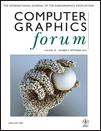Application of Visual Analytics for Thermal State Management in Large Data Centres
Abstract
Today's large data centres are the computational hubs of the next generation of IT services. With the advent of dynamic smart cooling and rack level sensing, the need for visual data exploration is growing. If administrators know the rack level thermal state changes and catch problems in real time, energy consumption can be greatly reduced. In this paper, we apply a cell-based spatio-temporal overall view with high-resolution time series to simultaneously analyze complex thermal state changes over time across hundreds of racks. We employ cell-based visualization techniques for trouble shooting and abnormal state detection. These techniques are based on the detection of sensor temperature relations and events to help identify the root causes of problems. In order to optimize the data centre cooling system performance, we derive new non-overlapped scatter plots to visualize the correlations between the temperatures and chiller utilization. All these techniques have been used successfully to monitor various time-critical thermal states in real-world large-scale production data centres and to derive cooling policies. We are starting to embed these visualization techniques into a handheld device to add mobile monitoring capability.




